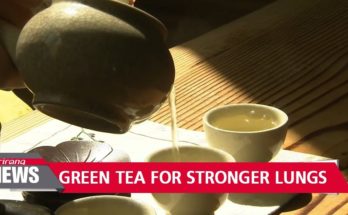Welcome to your brew kombucha. This is your kombucha basics guide to tea, so I’m gonna get started by talking a bit about what exactly tea is a lot of people don’t realize this, but tea actually comes from one plant so whether it’s green tea, black tea, oolong, tea or white tea.
If you are a lover of coffee read here Brewing Guides
It’s the same plant, it’s the Camellia Sinensis plant and that’s the type of tea that works best for kombucha making, even though all of those teas come from the same plant, the real difference lies in to the way it’s processed.
Some teas are dried and not fermented for a very long time, and it makes for a very mild flavour like white tea. Some teas are dried and fermented for a very long time like black tea, and it makes for a more robust flavour of the tea.
The best type of t-d used for kombucha is black tea, and it’s because black tea has the most tannins present in each of the individuals. Tea leaves.
The nutrients extracted from the tea are what’s going to help feed the bacteria and yeast during the kombucha fermentation process. You’Ll find that my recipes really only use black tea and that’s for a couple of reasons.
I find that compared to white tea or long tea, it tends to have a more robust flavour, which I happen to really like, and it’s because it also provides the most amount of nutrients for your kombucha to actually go through the fermentation cycle.
More recently, I’ve started experimenting by adding a small amount of green tea into my black tea, while it’s steeping to see if that affects the flavour profile of my kombucha at all, and I found that it’s actually led to a weak or tasting brew, which isn’t really.
My favourite so based on what I’m looking for. I really like the flavour that black tea gives my kombucha. As a general rule, I like to stick with black tea because it’s the healthiest for the kombucha and because I’ve been able to make dozens and dozens of batches of really delicious tasting tea.
With that, I like to use loose leaf tea, and it’s for a couple of reasons, one I’m a really big tea drinker and that’s the type of tea that I prefer and have on hand anyway. And it’s a lot cheaper to buy it in bulk than it is to buy a bunch of individual teabags for the most part when you buy tea and tea bags at the store.
The tea. That’S in those bags are actually a poorer quality or they’re smaller pieces of tea and not whole loose leaf bits of tea. That means that, over the course of the steeping cycle, the longer you steep it, the more your brew is going to get. I like to use loose leaf tea because it can withstand longer brew times better than bagged tea and it’s also more environmentally friendly, because that way, you’re not throwing away a bunch of teabags when you’re choosing the right tea for your kombucha.
It’s important to be really mindful of what ingredients are in the tea. You don’t want any tea that has any essences or flavourings, even if it says it’s natural, flavourings or fruit flavourings. Only because any other added chemicals or essences could affect the symbiosis of your Scobie and ultimately weak in your Scobie over time.
So even black teas, like Earl Grey, have bergamot flavouring and even though I’ve heard some rumours that there are some commercial brewing operations that actually use Earl, Grey tea and their first fermentation cycle, I don’t recommend it for the homebrewers. Unless you have a lot of Scobie’s, backed up on hand only because over time, depending on your scope ii and depending on the type of essence that they use in the tea, it could weaken your Scobie and make it more prone to mould over time.
So, depending on whether you’re, using black tea or green tea and depending on the quality of your tea, it really affects how long your steeping time should be when you’re, making your kombucha so play around with it and see what works best for you.
One thing to note is that it really is important to have a bit of a longer steeping time for your tea longer than the amount of time. You’D normally take to Steve a normal cup of tea.
And it’s because you really want to make sure that the hot water has enough time to extract as many nutrients from the tea as possible. Since you’re Scobie depends on those nutrients to survive and thrive.
It is worth mentioning that you can mess around with the types of tea you use during the first fermentation phase, people have successfully used Yorba, Mattei and rooibos and even hibiscus flowers, to make a successful first fermentation brew so feel free to experiment. Make sure you have some backup Scobie’s on hand just in case any of your experiments go wrong.
Just keep in mind that no matter what tea you use during the first fermentation phase, the final outcome and the final taste of your tea is really more highly dependent on the flavourings. You use it during the second fermentation phase in the bottle and that’s when the opportunities are really way more endless than the types of tea that you during the first fermentation phase.
At that point, you can really use anything to flavour it and you don’t need to worry about weakening your Skokie over time because you’re just gonna drink the bottle, if you want more information, be sure to check out the other videos on my channel and as always you can go to you brew, kombucha com for more happy brewing.


